Kia EV9 vs VW Tayron – Performance, range & efficiency compared
Everyday use, family trips or long-distance drives – here’s where the differences show.
Discover whether Kia EV9 or VW Tayron fits your lifestyle better.
Costs and Efficiency:
Price and efficiency are often the first things buyers look at. Here it becomes clear which model has the long-term edge – whether at the pump, the plug, or in purchase price.
VW Tayron has a distinct advantage in terms of price – it starts at 39000 £, while the Kia EV9 costs 53100 £. That’s a price difference of around 14156 £.
As for range, the Kia EV9 performs significantly better – achieving up to 563 km, about 437 km more than the VW Tayron.
Engine and Performance:
Power, torque and acceleration say a lot about how a car feels on the road. This is where you see which model delivers more driving dynamics.
When it comes to engine power, the Kia EV9 has a convincingly edge – offering 508 HP compared to 272 HP. That’s roughly 236 HP more horsepower.
In acceleration from 0 to 100 km/h, the Kia EV9 is evident quicker – completing the sprint in 4.60 s, while the VW Tayron takes 6.10 s. That’s about 1.50 s faster.
In terms of top speed, the VW Tayron performs barely noticeable better – reaching 240 km/h, while the Kia EV9 tops out at 220 km/h. The difference is around 20 km/h.
There’s also a difference in torque: Kia EV9 pulls convincingly stronger with 740 Nm compared to 400 Nm. That’s about 340 Nm difference.
Space and Everyday Use:
Beyond pure performance, interior space and usability matter most in daily life. This is where you see which car is more practical and versatile.
Seats: Kia EV9 offers evident more seating capacity – 7 vs 5.
In curb weight, VW Tayron is significantly lighter – 1682 kg compared to 2392 kg. The difference is around 710 kg.
In terms of boot space, the VW Tayron offers significantly more room – 885 L compared to 333 L. That’s a difference of about 552 L.
In maximum load capacity, the Kia EV9 performs slightly better – up to 2393 L, which is about 303 L more than the VW Tayron.
When it comes to payload, Kia EV9 hardly perceptible takes the win – 615 kg compared to 566 kg. That’s a difference of about 49 kg.
Who wins the race?
The Kia EV9 proves to be is largely superior and therefore becomes our DriveDuel Champion!
Kia EV9 is the better all-rounder in this comparison.
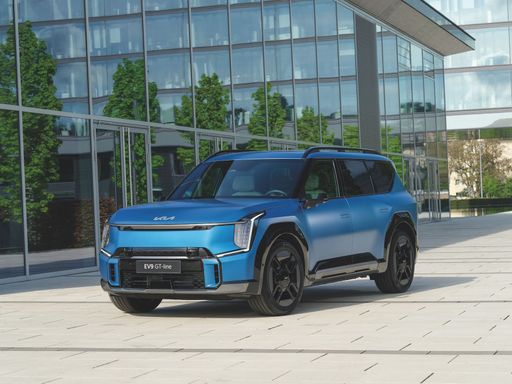
Kia EV9
Kia EV9
The Kia EV9 represents a bold step forward in the automotive world with its distinctive design and futuristic appeal. This all-electric SUV promises to provide a spacious and comfortable cabin experience, making it ideal for families and long journeys. With its emphasis on sustainability and advanced technology, the EV9 aims to redefine the standards for electric vehicles in its category.
details @ press.kia.com
@ press.kia.com
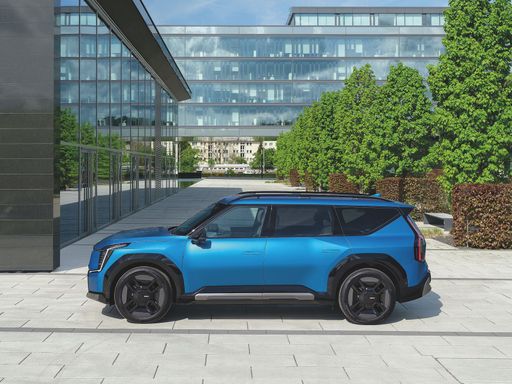 @ press.kia.com
@ press.kia.com
 @ press.kia.com
@ press.kia.com
 @ press.kia.com
@ press.kia.com
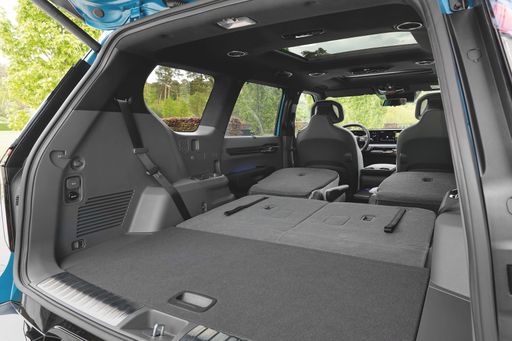 @ press.kia.com
@ press.kia.com
VW Tayron
The Tayron stands out as a stylish and versatile SUV that expertly blends form and function. With its spacious interior and modern design, it caters to families and adventure seekers alike, making every journey enjoyable. Equipped with advanced technology and safety features, the Tayron promises a driving experience that is both secure and exhilarating.
details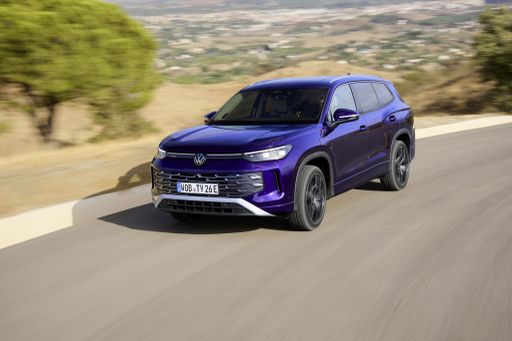 @ volkswagen-newsroom.com
@ volkswagen-newsroom.com
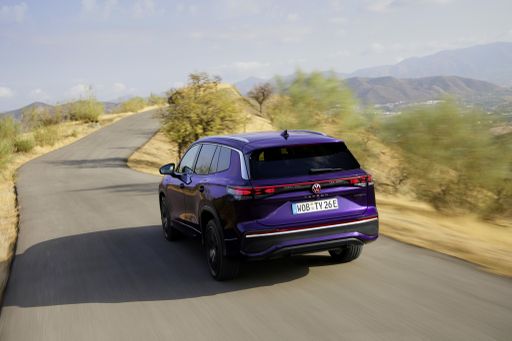 @ volkswagen-newsroom.com
@ volkswagen-newsroom.com
 @ volkswagen-newsroom.com
@ volkswagen-newsroom.com
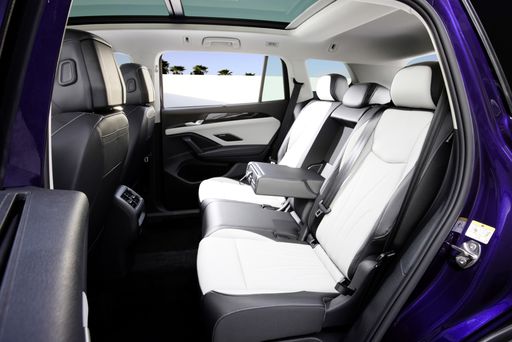 @ volkswagen-newsroom.com
@ volkswagen-newsroom.com

|

|
|
|
|
Costs and Consumption |
|
|---|---|
|
Price
53100 - 78000 £
|
Price
39000 - 52600 £
|
|
Consumption L/100km
-
|
Consumption L/100km
0.4 - 8.5 L
|
|
Consumption kWh/100km
19.5 - 22.8 kWh
|
Consumption kWh/100km
-
|
|
Electric Range
443 - 563 km
|
Electric Range
117 - 126 km
|
|
Battery Capacity
76.1 - 99.8 kWh
|
Battery Capacity
19.70 kWh
|
|
co2
0 g/km
|
co2
9 - 192 g/km
|
|
Fuel tank capacity
-
|
Fuel tank capacity
45 - 58 L
|
Dimensions and Body |
|
|---|---|
|
Body Type
SUV
|
Body Type
SUV
|
|
Seats
6 - 7
|
Seats
5
|
|
Doors
5
|
Doors
5
|
|
Curb weight
2392 - 2664 kg
|
Curb weight
1682 - 1948 kg
|
|
Trunk capacity
333 L
|
Trunk capacity
705 - 885 L
|
|
Length
5010 - 5015 mm
|
Length
4792 mm
|
|
Width
1980 mm
|
Width
1853 - 1866 mm
|
|
Height
1755 - 1780 mm
|
Height
1666 - 1668 mm
|
|
Max trunk capacity
2318 - 2393 L
|
Max trunk capacity
1915 - 2090 L
|
|
Payload
542 - 615 kg
|
Payload
489 - 566 kg
|
Engine and Performance |
|
|---|---|
|
Engine Type
Electric
|
Engine Type
Petrol MHEV, Plugin Hybrid, Diesel, Petrol
|
|
Transmission
Automatic
|
Transmission
Automatic
|
|
Transmission Detail
Reduction Gearbox
|
Transmission Detail
Dual-Clutch Automatic
|
|
Drive Type
All-Wheel Drive, Rear-Wheel Drive
|
Drive Type
Front-Wheel Drive, All-Wheel Drive
|
|
Power HP
204 - 508 HP
|
Power HP
150 - 272 HP
|
|
Acceleration 0-100km/h
4.6 - 9.4 s
|
Acceleration 0-100km/h
6.1 - 9.7 s
|
|
Max Speed
185 - 220 km/h
|
Max Speed
204 - 240 km/h
|
|
Torque
350 - 740 Nm
|
Torque
250 - 400 Nm
|
|
Number of Cylinders
-
|
Number of Cylinders
4
|
|
Power kW
150 - 374 kW
|
Power kW
110 - 200 kW
|
|
Engine capacity
-
|
Engine capacity
1498 - 1984 cm3
|
General |
|
|---|---|
|
Model Year
2023 - 2025
|
Model Year
2025
|
|
CO2 Efficiency Class
A
|
CO2 Efficiency Class
E, B, F, G
|
|
Brand
Kia
|
Brand
VW
|
Is the Kia EV9 offered with different drivetrains?
The Kia EV9 is offered with All-Wheel Drive or Rear-Wheel Drive.
The prices and data displayed are estimates based on German list prices and may vary by country. This information is not legally binding.
